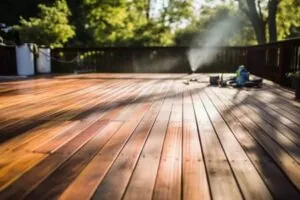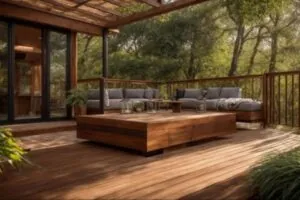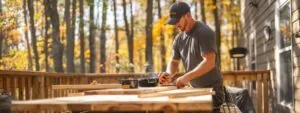A well-maintained deck is the heart of any outdoor space, offering a place to relax, entertain, and make lasting memories. But over time, exposure to harsh weather, heavy foot traffic, and natural wear can leave your deck looking dull and damaged. If your once-beautiful deck has lost its charm, do not worry—restoring it does not have to be overwhelming.
Properly restoring a deck can bring it back to life, whether it is peeling paint, fading stains, cracked boards, or fading color. Restoration revives your deck’s appearance and protects it from further damage, ensuring it remains safe and enjoyable for years to come. In this guide, we will walk you through every step of the process, from cleaning and repairing to sanding and staining, helping you achieve professional-level results without the stress.
So, roll up your sleeves and get ready to give your outdoor space a fresh start. Restoring a deck is easier than you think—and the results are worth it!
Signs Your Deck Needs Restoration
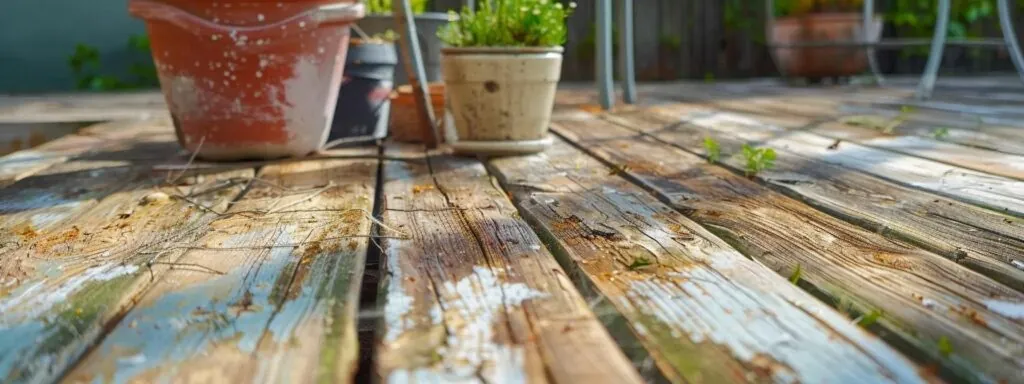
Over time, exposure to the sun, rain, and other elements can take a toll on your deck. If you notice any of the following signs, it might be time to restore your deck. An adequately restored deck not only improves its appearance but also helps to maintain its safety and functionality. Let’s look at the most common signs your deck is due for a restoration.
Cracks, Warping, and Splintering
One of the most common signs that your deck needs restoration is visible damage like cracks, warping, or splintering. These issues typically occur due to weathering, such as prolonged exposure to sun, rain, and snow. Cracks can allow water to seep in, leading to further damage while splintering can make your deck unsafe for walking. Warping often happens when moisture gets trapped in the wood, causing it to expand and contract. Repairing these issues may involve sanding the surface, replacing damaged boards, or even using wood fillers to seal minor cracks.
Fading and Discoloration
Fading and discoloration are common problems caused by exposure to the sun. UV rays can strip away the deck’s natural color, leaving it looking dull and lifeless. Whether your deck is made of wood, composite, or other materials, fading indicates the protective finish or sealant has worn away. You will notice a color change, often turning the wood grey or uneven in tone. Restoring your deck by cleaning it thoroughly and applying a new stain or sealer can bring back its original look and protect it from further UV damage.
Structural Issues Like Uneven Surfaces
Uneven surfaces or sloping areas on your deck can create a tripping hazard, signaling potential structural issues. Over time, the wood may shift or settle, leading to a surface that no longer feels level. To fix an uneven deck, adjusting or replacing support beams, joists, or even the foundation may be necessary. Leveling an older deck requires checking the structural integrity, changing the frame, and correctly positioning the boards. It is best to consult with a professional if structural issues are severe for safety and stability.
Loose Boards and Nails
Loose boards and nails are another common sign that your deck may need restoration. This can happen when nails or screws become loose over time due to wood expansion and contraction or from frequent foot traffic. Loose boards can be a tripping hazard and may cause further damage if not addressed. To restore your deck, you should secure loose boards by tightening the nails or replacing them if necessary. Additionally, check for any protruding nails or screws and ensure all fasteners are correctly aligned to maintain a smooth, safe surface.
Rot, Mold, or Mildew
Rot, mold, and mildew are severe signs that your deck needs immediate restoration, as they can often indicate advanced decay and degradation of the deck wood itself. These issues often result from moisture buildup and poor drainage, leading to wood decay, structural weaknesses, and major health concerns. If you notice soft, spongy spots in the wood, it could indicate that the deck is rotting. Mold and mildew growth can appear as dark spots or streaks on the surface, which are unsightly and can lead to slippery conditions.
How to Restore a Weathered Deck
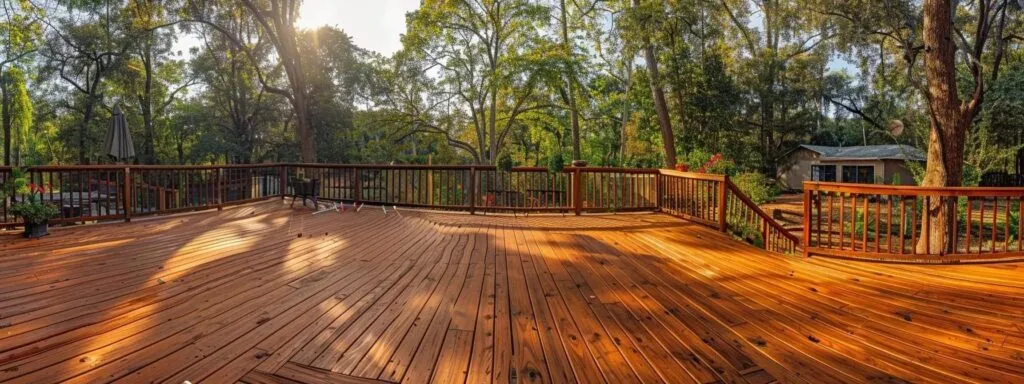
Restoring a weathered deck involves a few essential steps to bring it back to life. Whether you are dealing with a faded, dirty deck, or showing signs of damage, following the right restoration process will help ensure a beautiful and functional outdoor space. Here is a straightforward guide to help you properly restore your weathered deck.
1. Cleaning the Deck Surface
The first step in restoring a weathered deck is thoroughly cleaning the surface. Use a deck cleaner or a mixture of water and mild detergent to remove dirt, grime, and mildew. A pressure washer can be helpful for stubborn spots but should be used carefully to avoid damaging the wood. Ensure the surface is completely dry before moving on to the next steps. Proper cleaning will improve the effectiveness of stains, sealants, and finishes applied later in the process.
2. Sanding and Repairing Damage
After cleaning, it is time to sand the deck to smooth out rough spots and remove any old paint or stains. Sanding helps prepare the surface for better adhesion of new finishes and prevents splinters. Repair any damage like cracks or holes using wood filler. If any boards are severely warped or cracked, it may be necessary to replace them. Once the surface is smooth and damage-free, your deck will be ready for the next steps in the restoration process.
3. Apply Restoration Paints and Stains for Decks
Applying restoration paint or stain is crucial for enhancing the appearance and durability of your deck. Choose a high-quality deck stain or paint with UV protection and water resistance. Staining is often preferred as it preserves the natural look of the wood while providing a protective layer. Make sure to apply the stain or paint evenly using a brush or roller, following the manufacturer’s instructions. This step will not only improve the look but also extend the life of your deck.
4. Add Deck Floor Sealants and Resurfacing
After staining or painting, applying a deck floor sealant is important to protect the wood from moisture, dirt, and UV damage. Sealants create a protective barrier that prevents water from seeping into the wood, which could lead to rot. If your deck is severely weathered, resurfacing it with a composite overlay might be necessary for a more polished look and better durability. Ensure the sealant has enough time to dry and cure before using the deck.
DIY vs Professional Deck Restoration
When it comes to deck restoration, you can do it yourself or hire a professional. DIY restoration can save you money and give you the satisfaction of completing the work yourself. If your deck has minimal damage and you are comfortable with tools, cleaning, sanding, and applying stains or sealants, a DIY project can be a great choice. It allows you to take control of the timeline and materials used.
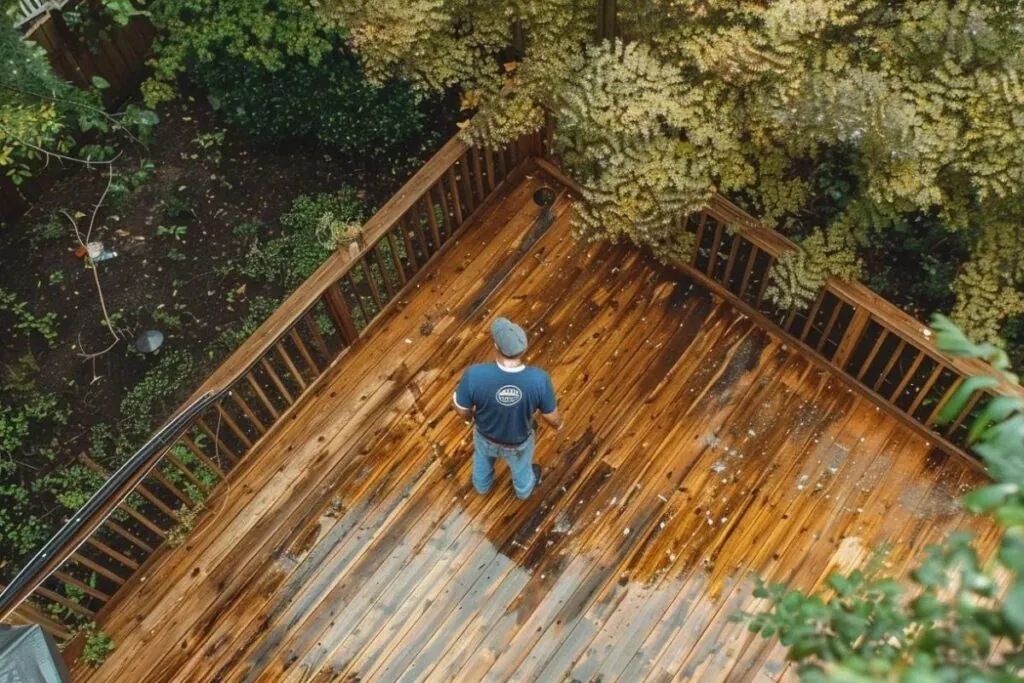
However, a professional may be the better option if your deck has significant structural damage, such as rotting wood or unstable surfaces. Deck restoration professionals in Cape May, New Jersey, have the experience and equipment to handle complex issues, ensuring the job is done safely and efficiently. They can also help obtain high-quality materials and apply advanced techniques for long-lasting results.
Tips for Maintaining a Restored Deck
After restoring your deck, maintaining it is crucial to ensure its longevity and appearance. Proper care helps prevent future damage and keeps your deck looking great for years. Here are a few essential tips to help you maintain a restored deck.
Regular Cleaning and Seasonal Inspections
Regular cleaning is key to keeping your restored deck in top condition. Sweep away dirt and debris to prevent buildup, and wash the surface with a gentle cleaner to avoid stains or mold growth. Seasonal inspections are equally important—check for any signs of damage, such as loose nails, cracks, or splintering. Address any issues promptly to avoid further damage. Regular upkeep will extend the life of your deck and maintain its safety and appearance.
Resealing and Repainting as Needed
Over time, the protective sealant or paint on your deck may wear off due to weather exposure. To maintain the deck’s integrity, resealing or repainting should be done every 1-3 years, depending on wear. This will protect the wood from moisture, UV rays, and stains; clean and sand the surface before resealing or repainting to ensure proper adhesion. By staying on top of these tasks, you will preserve your deck’s beauty and prevent costly repairs down the line.
Let’s Revive Your Old Deck!
Restoring a deck rejuvenates its appearance and safeguards its structure. Key steps include cleaning, sanding, repairing damage, and applying protective stains or sealants. Addressing issues like cracks, fading, and mold improves safety and extends durability. Whether DIY or professional, proper restoration transforms your deck into a welcoming, long-lasting outdoor haven. Call today to get started!
Frequently Ask Questions about Deck Restoration
What not to do when staining a deck?
Avoid staining a deck when the surface is dirty or wet, as this can prevent the stain from adhering properly. Do not skip sanding rough areas, and avoid applying too thick a layer of stain, which can lead to uneven drying or peeling. Always follow the manufacturer’s instructions and test a small area before committing to the entire deck.
How do you prepare a weathered deck for staining?
Preparation involves cleaning the deck thoroughly to remove dirt, grime, and mildew. Use a deck cleaner or a mixture of water and mild detergent. Sand rough spots to smooth the surface and remove any old stain or peeling paint. Allow the deck to dry completely before applying the stain.
Should I pressure wash my deck before staining?
Pressure washing can be helpful in cleaning your deck, but it should be done carefully. Using too much pressure can damage the wood, causing splintering or gouges. Set the pressure washer to a low setting and maintain a consistent distance from the surface to ensure effective cleaning without harm.
What is the best way to restore an old deck?
The best way to restore an old deck involves cleaning, sanding, repairing any damage, and applying a protective stain or sealant. Address issues like cracks, loose boards, and fading by replacing damaged components and revitalizing the wood with high-quality products. Regular maintenance afterward will keep your deck in excellent condition.
How do you bring a weathered deck back to life?
To revive a weathered deck, start by cleaning it thoroughly to remove dirt and stains. Sand the surface to eliminate splinters and prepare it for staining or painting. Apply a stain or restoration paint that enhances the deck’s appearance while protecting it from UV rays and moisture. Finish by sealing the deck to preserve its durability and aesthetics.

